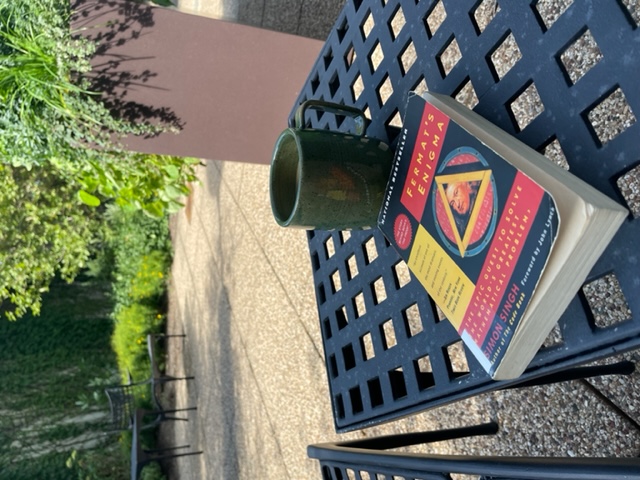Fermat's Enigma

About the book
Fermat’s Enigma, by Simon Singh, is a non-fiction book about the history of the theorem known as Fermat’s Last Theorem. The theorem itself is elegantly simple:
For the equation $$ x^n + y^n = z^n $$ where $$ n = 3,4,5... $$ there exists no whole-number solution of $$ (x,y,z) $$.
The theorem was initially suggested by a mathematical genius Pierre de Fermat during the mid-17th centry, as a scribble on one of his books - only published after his death by one of his sons. Fermat, notorious for his reluctance for writing out full proofs in general, famously scribbled down:
I have a truly marvelous demonstration of this proposition which this margin is too narrow to contain.
Little did he know that the greatest of mathematicians would be tackling and failing to prove this theorem for the next 350 years until, in the early 1990s, Andrew Wiles, a professor at Princeton University finally is able to put the matter at rest. This book tells the “truly marvelous” story of this theorem, starting from ancient Greek (500 B.C.) all the way to 1995.
The sheer number of people that the theorem had been touched by
Reading through this book was almost like looking through old personal photoalbums of your distant relatives that you had heard of but never met. Literally every single name that I can remember from math, physics, and general science classes popped up as real human figures, somehow entangling themselves into the epic arc of this theorem.
The story starts over a thousand years before Pierre de Fermat was born, when the fundamental ideas that Fermat will be building this conjecture on start to emerge. (An easy connection is the Pythagorean theorem, perhaps tattooed on everyone’s brain: \(x^2 + y^2 = z^2\) - which takes a very similar form to Fermat’s Last Theorem.) As history unravels, those who appear along the way imclude Euclid, Bernoulli, Fourier, Gauss, Newton, Pascal, Turing, Archimedes, Pythagoras… even Cleopatra and Alexandar the Great are a part of the story! It was so cool to see the names that I knew only from equations emerge as full humans with their own story. It also came to me as a pleasant surprise that mathematicians from my home country, Japan, had actually contributed a substantial amount of work on this theorem following WW2.
Best part of the book: the numerous dramatic events that the theorem lived through
Even though it was quite fun to exercise my basic number theory muscles that I haven’t used in so many years, the absolute best part of the book was the mindblowing human drama that surrounded the development of this theory. There were murders, riots, revolutions, the world wars, affairs, suicides, duels, rivalries, secrets, politics, pop culture, and even April’s fools. The vast fabric of personal stories and human drama that revolves around this equation is so immense that it’s difficult to see with a birds-eye view. As a reader that relish personal stories in general, I was extremely drawn in by this aspect of this book.
The dedication and perseverence of Andrew Wiles
Finally, I cannot go without mentioning the awe I felt at the amount of dedication, perseverence, and fascination that Andrew Wiles had on Fermat’s Last Theorem. Wiles was captivated by the theorem in his childhood, and even though he didn’t start working directly on it until later in his career, he always kept it close to his heart. Reading accounts by him and his colleagues recalling the years of working in isolation, the grand reveal, and of the continued work following the publicizing of the proof made me really appreciate the academic process and the efforts that go into it even further.